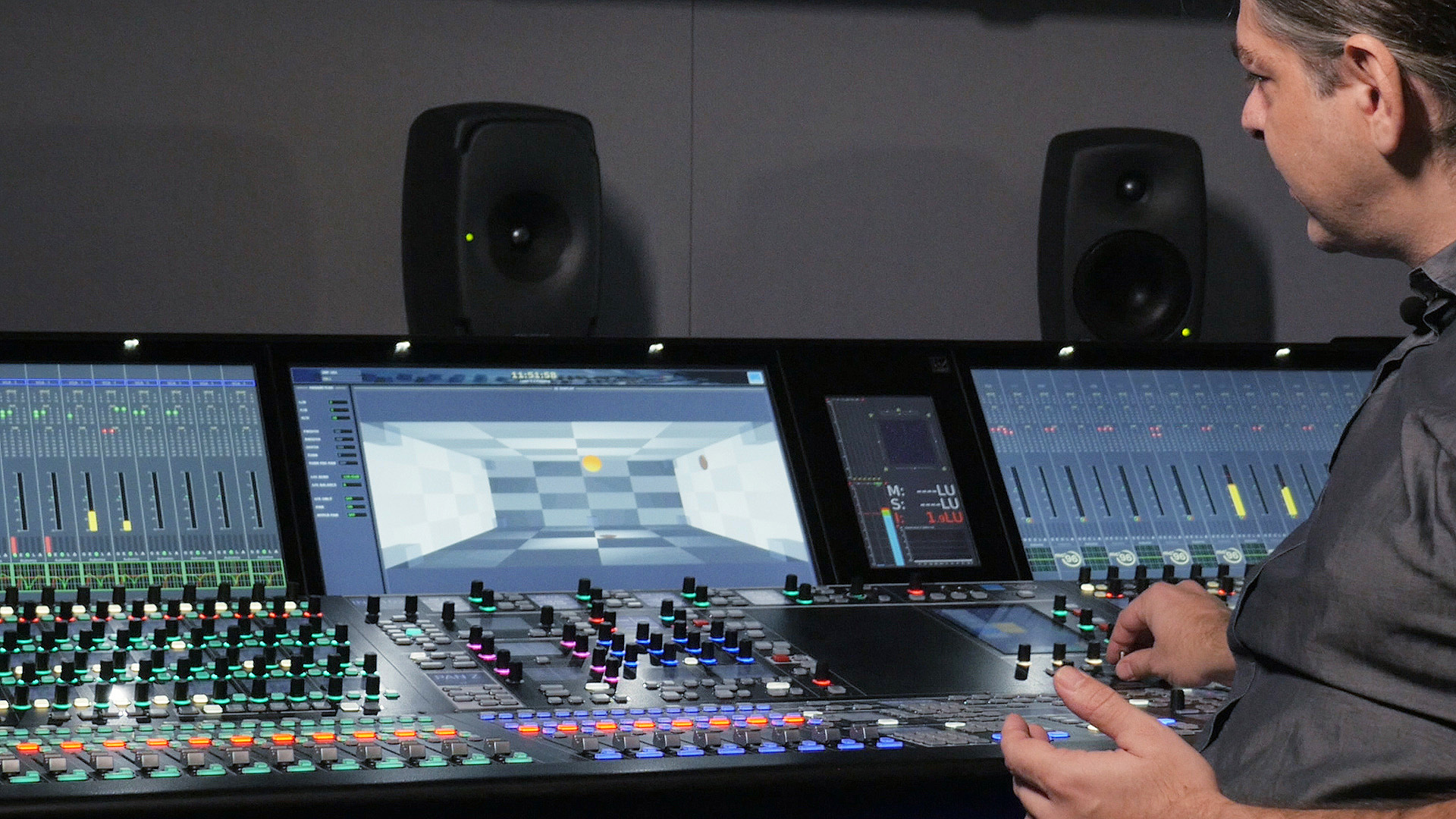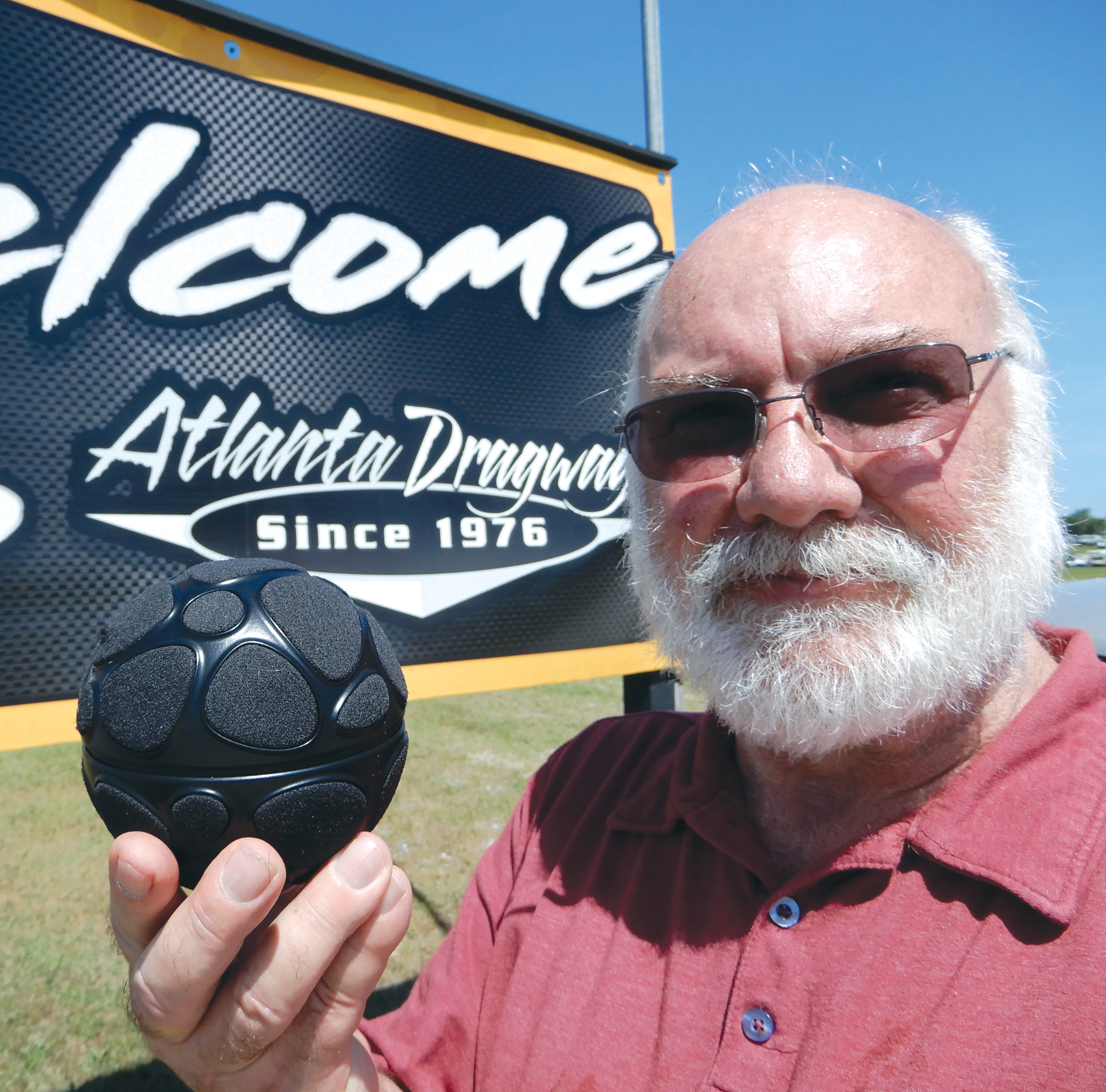Mixing Consoles—Beyond the Capture
Digital mixing desks should be a TV studio's audio control center

With all the utilitarian advances in digital mixing console technology, there is no doubt that the digital mixing desk should be the audio control center in the modern television studio
and OB van. In the long run, a versatile mixing desk saves everyone money because today’s digital mixing desk is capable of the sound management of the entire studio and OB van—from I/Os for routers, recorders, transmission points, pre-hears, to speaker feeds and headset feeds—essentially all things audio will probably pass through the mixing desk.
The digital mixing desk consolidates the processing and routing of audio signals and with dense channel audio formats like MADI and AES67, along with fewer and cheaper connectors, the digital audio mixing console saves time in the installation (copper and connector costs + labor) and saves money in the operation of an OB van simply because of the reduction in weight from less permanent cable and connectivity.
Soft patching through the mixing desk facilitates an easier and faster setup for the operators and fewer interruptions for the sound supervisor/sound mixer. From a retired OB sound mixer, for me an unheralded aspect of a digital mixing console is that only the control surface needs to be in the audio mix room. This not only saves space in the audio room, but the noisy CPU fans and other electronics can be located elsewhere in the OB van and away from the ears of the mixer.
As studio complexes expand and remote broadcasts swell, the need for equipment to be able interconnect and exchange digital audio and data has never been greater. A significant development for digital equipment and particularly the digital mixing console was a protocol that established a standard language for audio transport work over IP. The standard
is codified under AES67 and insures and simplifies interconnectivity between different manufacturers of equipment.
IP interoperability has been a major effort of Philipp Lawo through one of his brands Ravenna, who along with AES, Dante, Q-Sys, Livewire+ and WheatNet-Ip from Wheatstone share in the 2020 Technical and Engineering Emmy Award for the development of synchronized multichannel uncompressed audio transport over IP networks.
The professional video industry's #1 source for news, trends and product and tech information. Sign up below.
Lawo and Wheatstone digital mixing desks manage I/Os through an IP network, which has become a common platform for resource sharing when operations have to scale up and down or change over to another show within minutes. There is no doubt that high-performance IP interoperability will affect all engineering technologies in television.
TECHNOLOGY SHIFT
The audio and broadcast industry is witnessing a technology and operational shift with the next generation of digital mixing consoles coming online. When first-gen digital consoles rolled out they somewhat mimicked the analog architecture, flow and format that digital was replacing. Eight-buss architecture was never an issue until the broadcast format went to immersive sound.
The interest in and production of immersive sound had been gaining traction during the time that console manufacturers were slowly working on next-gen digital mixing consoles, even while some immersive sound productions were underway. In the June 2019 issue of TV Technology (“Hearing It, Believing It”) I wrote about NHRA’s immersive sound production using concentric 5.1 mixing buses on an eight-buss mixing console. There are a lot of mixing consoles with this architecture because eight-buss architecture has been the standard for several decades. But now it seems the stars have aligned and the major console manufacturers have made true immersive sound a reality.
Localization using the concentric 5.1 method of immersive sound production has proven adequate for some sports and entertainment productions, but precise localization is only possible with three-dimensional panning. A significant creative aspect of advanced mixing console technology is that the live mixers can spatially pan 3D audio in the horizontal and finally vertical axis, also known as XYZ panning, something Christian Struck, senior product manager at Lawo already offers.
“Lawo can offer XYZ Panning on up to 128 channel strips, supporting various channel-based mixing formats including 5.1.4 and 22.2,” Struck said.
USE OF PLUG-INS
Precise localization is the basic foundation of immersive spatialization; however, beyond panning is advanced processing, which can be applied to audio signals within the console through plug-ins, a specialized code for an audio task or processor that can function in the mixing console’s operating system. Plug-ins are usually developed by third-party developers and are both inexpensive and beneficial to the audio industry. These programs have been useful for up-processing, spatialization and other sonic applications that are not native to the mixing desk such as volume, routing, panorama, equalization and dynamics.
Plug-ins save time and money. For example, at the Grammy Awards, the artist comes into the audio OB van and gives John Harris and Jay Vicari a USB stick with the plug-in settings of virtually every single channel and instrument. This is obviously a significant time saver, and with instant recall the turnaround time for musical acts is little more than the time for a commercial.
Sports has seen an increase in the use of plug-ins because often production music for bumpers, features, billboards and breaks comes to the venue, OB van or studio in stereo and needs to be up-processed to surround and immersive formats. I have seen this done more often on a laptop that feeds the mixing console although there is no reason this application cannot be done in the mixing console.
I have been amazed at the little use of plug-ins by broadcast sports mixers, but my most recent survey of live mixers showed that in the last two years there has been an modest increase in the use of plug-ins—particularly as the age demographics tick down with new and younger mixers.
I also think that the up-and-coming generation of audio mixers have better listening facilities in the OB van and studio than ever before and are motivated to work on the nuances and sonic quality of their sound.
Finally, sound management of multiple audio formats and speaker systems is necessary for a successful dimensional production. You have to be able to hear what you are mixing across all the channel and speaker formats you are supporting.
The live audio world needs a mixing desk that is affordable, has a modest footprint, versatile control surface and lots of capacity to tame the demanding world of immersive sound. Oh, and did I say easy to operate? I think we are getting there.
Decades ago, I had the opportunity to mix The Talladega 500 for CBS on a 32-channel Ward Beck console with a 12-channel vertically racked side mixer for tape machine playback. Many years later I asked my friend Fred Aldous, long-time mixer, sound designer and
Emmy winner for Fox Sports, how many channels of audio he averaged on a NASCAR race. He shook his head and said “Hundreds.”
It just makes my analog head hurt thinking about it.
Dennis Baxter has spent over 35 years in live broadcasting contributing to hundreds of live events including sound design for nine Olympic Games. He has earned multiple Emmy awards and is the author of “A Practical Guide to Television Sound Engineering,” published in English and Chinese, and is currently working on a book about immersive sound practices and production.
He can be reached at dbaxter@dennisbaxtersound.com or at www.dennisbaxtersound.com.
Dennis Baxter has spent over 35 years in live broadcasting contributing to hundreds of live events including sound design for nine Olympic Games. He has earned multiple Emmy Awards and is the author of “A Practical Guide to Television Sound Engineering,” published in both English and Chinese. His current book about immersive sound practices and production will be available in 2022. He can be reached at dbaxter@dennisbaxtersound.com or at www.dennisbaxtersound.com.

